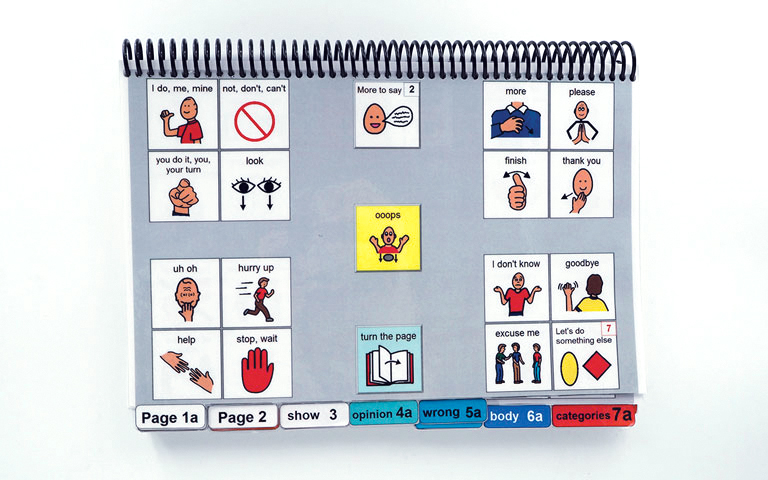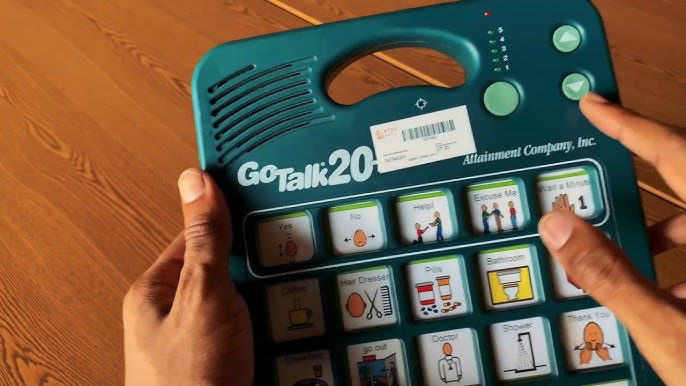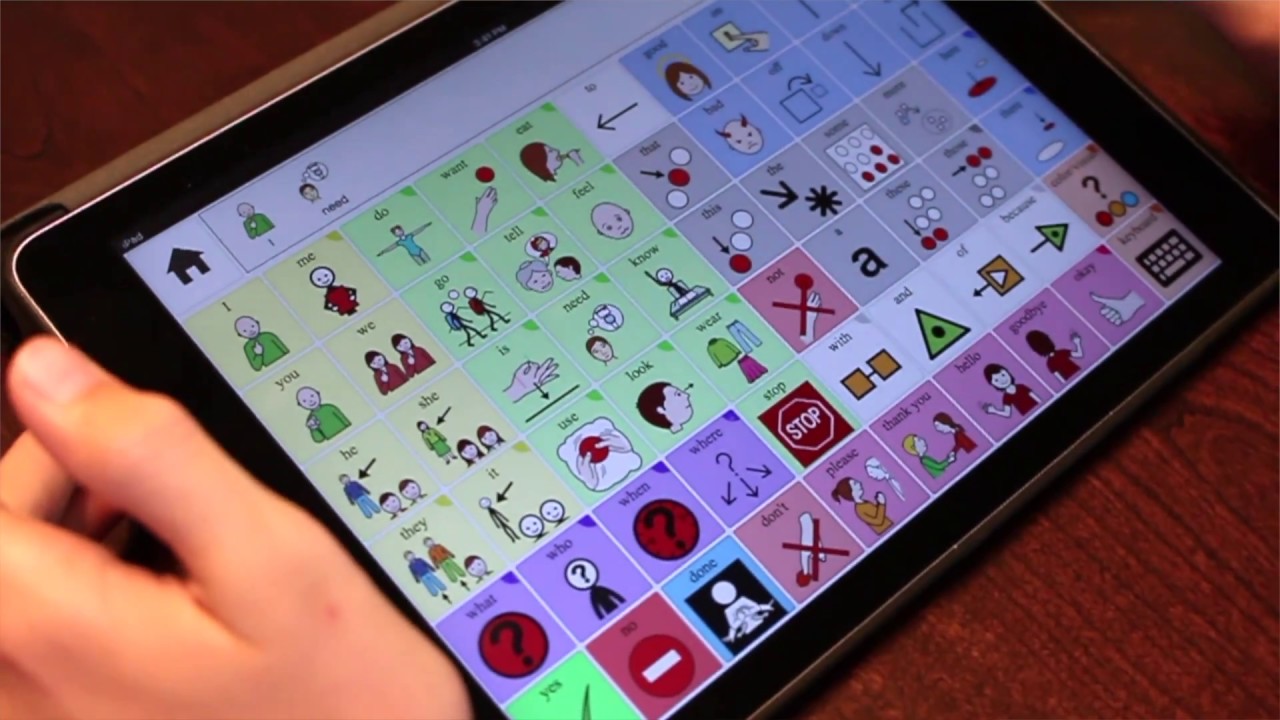My AAC
Helping you get started, or grow your own experiene using AAC
Topics
- AAC Basics
- Additional Strategies
- Presentations By AAC Users
- Self-Advocacy and Mentoring
- Online Communities
AAC Basics
Augmentative and Alternative Communication (AAC) is actually a whole category of different kinds of tools and strategies. The main purpose of AAC is to help people express themselves when they may not always be able or comfortable using their natural voice. AAC can also help people develop a deeper understanding of language, and make it easier for them to express themselves. AAC is often printed on paper, activated by buttons that speak, or organized on a tablet or phone for more advanced speech output.
AAC empowers individuals to convey their thoughts, needs, and emotions, which can lead to improved language development. It can serve as a bridge to gradually transition from non-verbal or limited verbal communication to more robust language skills, promoting social interaction and emotional well-being. Overall, AAC is a valuable resource that fosters language growth and enhances the quality of life for individuals with communication difficulties.
With the aid of AAC, many individuals enjoy full and productive lives, able to respond to questions and communicate independently throughout their days.
Here’s a list of some AAC options across different categories:
High Tech AAC
- Tablet-Based AAC Systems: Specialized software running on tablets that can be customized for individual needs.
- Communication Apps: Apps installed on tablets or smartphones with text-to-speech functionality, such as Proloquo2Go or TouchChat.
- Eye-Tracking AAC Systems: Devices that track eye movement to select symbols or words on a screen.
- Alternative Access Apps: For those physically unable to use the touchscreen, SGDs offer flexible access options including: Eye-gaze Head tracking Joystick and alternative mouse control Single and multiple switch control Thus, even children with severe physical disabilities can operate a life-changing AAC device.
Pros:
|
Cons:
|
It's important to remember that the choice of AAC system depends on an individual, everyone has different needs, preferences and abilities. Professional consultants like speech-language pathologists can provide an assessment, which will help in selecting the most appropriate AAC solution for each person. Additionally, the field of AAC continues to evolve with advancements in technology, so new solutions may become available over time.
Communication Bill of Rights
In collaboration the practitioners and AAC users, the Communication Bill of Rights was created to assert and remind that everyone, no matter their perceived limitations, should be treated with respect and be allowed the freedom to drive their own existence and interact with others through communication.

Additional Strategies
Core Word Strategies
Core Workshop and Project Core may give ideas on how to use some of these words in a new way.
Welcome to The Communication Workshop! Here you’ll find resources and ideas for introducing core words to developing communicators! The content on this site is free and open-licensed, and includes contributions from experts and community members from around the world. Check out the activities and ideas for any word you’d like to focus on!
UATT Training Videos
The following are videos found on the Utah Assistive Technology Teams YouTube channel can be a place to start when learning about Augmentative and Alternative Communication (AAC). They are between 8-20 minutes long and show about (1) language development, (2) what modeling language can look like as well as some of the (3) differences between communication and requesting. The videos then move into (4) teaching language and communication skills with more about (5) communication partners. Starting with the first three is a place to begin. Pause there and think about 1 or 2 things you can start to do in your home or school setting. These videos build your knowledge of AAC and language with these steps.
Intro to AAC and Language Development
Communicating versus Responding
AAC training: Teaching Language and Communication Skills
Supportive Communication Partners
Aided Language Stimulation Explained by Chris Bugaj 2:31 video
How to Get Started Modeling Language on AAC by Rachel Madel 2:36 video
Presentations By AAC Users
Self-Advocacy and Mentoring
While there are some online articles discussing self-advocacy for AAC users, most of them are focused on how therapists and families can encourage self-advocacy for AAC users. The ideas in these posts are still useful, however, and may give you some ideas of how you can increasingly advocate for yourself. We hope to add more communicator-centric resources over time.
5 Ways to Support Self-Advocacy in AAC Learners
Am I Muted?!? Effective Self-Advocacy in AAC Users
AAC mentors: Role-models and experts for AAC users - at the end of this article are links to possible mentors who public regularly online.
Online Communities

Temple University hosts weekly virtual meetups for AAC users discussing topics like AAC strategies and use, introductions to new technology, etc.

ImpAACt Voices hosts monthly AAC meetups for AAC users 14 years or older. Sessions include hearing from other AAC users, and also just open-ended social time.

AAC in the Cloud is an annual virtual conference covering the latest topics and strategies in AAC. Presenters include AAC users, therapists and practitioners, parents, and providers. All sessions are recorded and made available online, so there are hundreds of sessions available on a range of topics.
 Utah Center for AAC Excellence
Utah Center for AAC Excellence


 Yoo Sun Chung -- Breaking Down Ableism to Unlock Possibilities
Yoo Sun Chung -- Breaking Down Ableism to Unlock Possibilities Cristian Rosas: How I Learned to Read -- the experience of an AAC user
Cristian Rosas: How I Learned to Read -- the experience of an AAC user D. Burrow: AAC in the Workplace
D. Burrow: AAC in the Workplace Saoirse T: Communication is a Human Right -- Why is Society Communication Inaccessible
Saoirse T: Communication is a Human Right -- Why is Society Communication Inaccessible Tuttleturtle (Stephanie): My AAC is Part of My Gender Presentation
Tuttleturtle (Stephanie): My AAC is Part of My Gender Presentation Darla Burrow: Talking About Your Passions -- Challenges & Realities in Programming AAC to Talk About the Stuff You Love
Darla Burrow: Talking About Your Passions -- Challenges & Realities in Programming AAC to Talk About the Stuff You Love Mike Hipple: Welcome to the AAC Community
Mike Hipple: Welcome to the AAC Community Naomi: Fostering Independence of AAC Users in ALL Areas of Life
Naomi: Fostering Independence of AAC Users in ALL Areas of Life tuttleturtle: AAC is Everything, Everything is AAC -- Why Guided Access & Other Methods of Locking Tablets Remove Autonomy
tuttleturtle: AAC is Everything, Everything is AAC -- Why Guided Access & Other Methods of Locking Tablets Remove Autonomy Lydia Dawley: Collaborating with Clients with AAC on What They Want to Work on in Therapy
Lydia Dawley: Collaborating with Clients with AAC on What They Want to Work on in Therapy Cole Sorensen & Donnie TC Denome: Autonomy, Self-determination, Dignity of Risk, and Harm Reduction for AAC Users
Cole Sorensen & Donnie TC Denome: Autonomy, Self-determination, Dignity of Risk, and Harm Reduction for AAC Users Saoirse Tilton: Symbols, Multimodal Communication and Screen Readers -- Adapting AAC and Reading and Cognitive Support Needs in Adults
Saoirse Tilton: Symbols, Multimodal Communication and Screen Readers -- Adapting AAC and Reading and Cognitive Support Needs in Adults Donnie TC Denome: Ensuring Equitable Access to Health Care for AAC Users
Donnie TC Denome: Ensuring Equitable Access to Health Care for AAC Users Cristian Rosas: Taking My AAC Into Adulthood
Cristian Rosas: Taking My AAC Into Adulthood Hannah Foley, Sarah Gregory, & Joanna Holmes: Home Grown – Planting Seeds for AAC Growth
Hannah Foley, Sarah Gregory, & Joanna Holmes: Home Grown – Planting Seeds for AAC Growth Chris Gibbons: AAC Speakers Panel -- Experiences and Opportunities for Paid Speaking Engagements
Chris Gibbons: AAC Speakers Panel -- Experiences and Opportunities for Paid Speaking Engagements